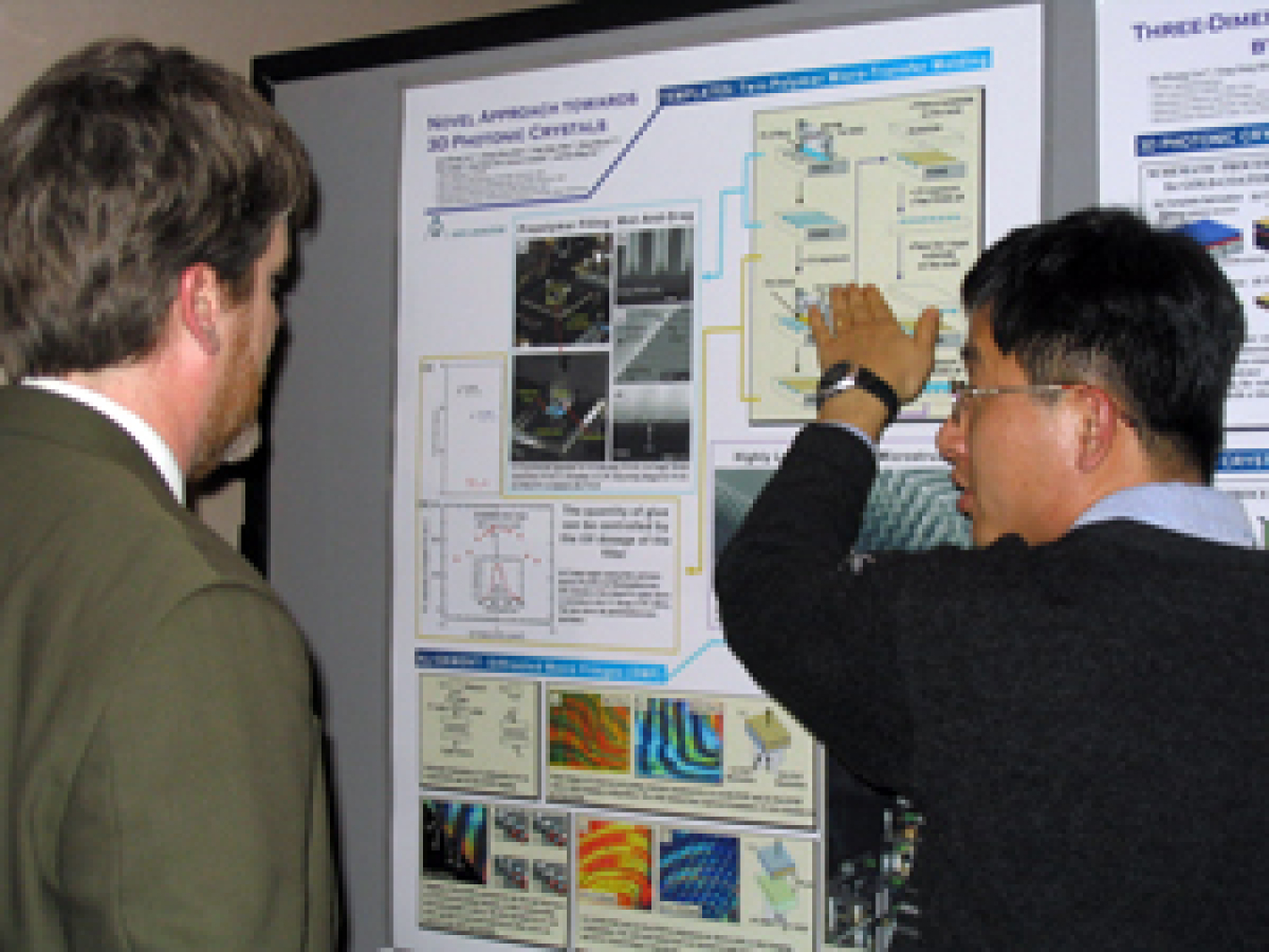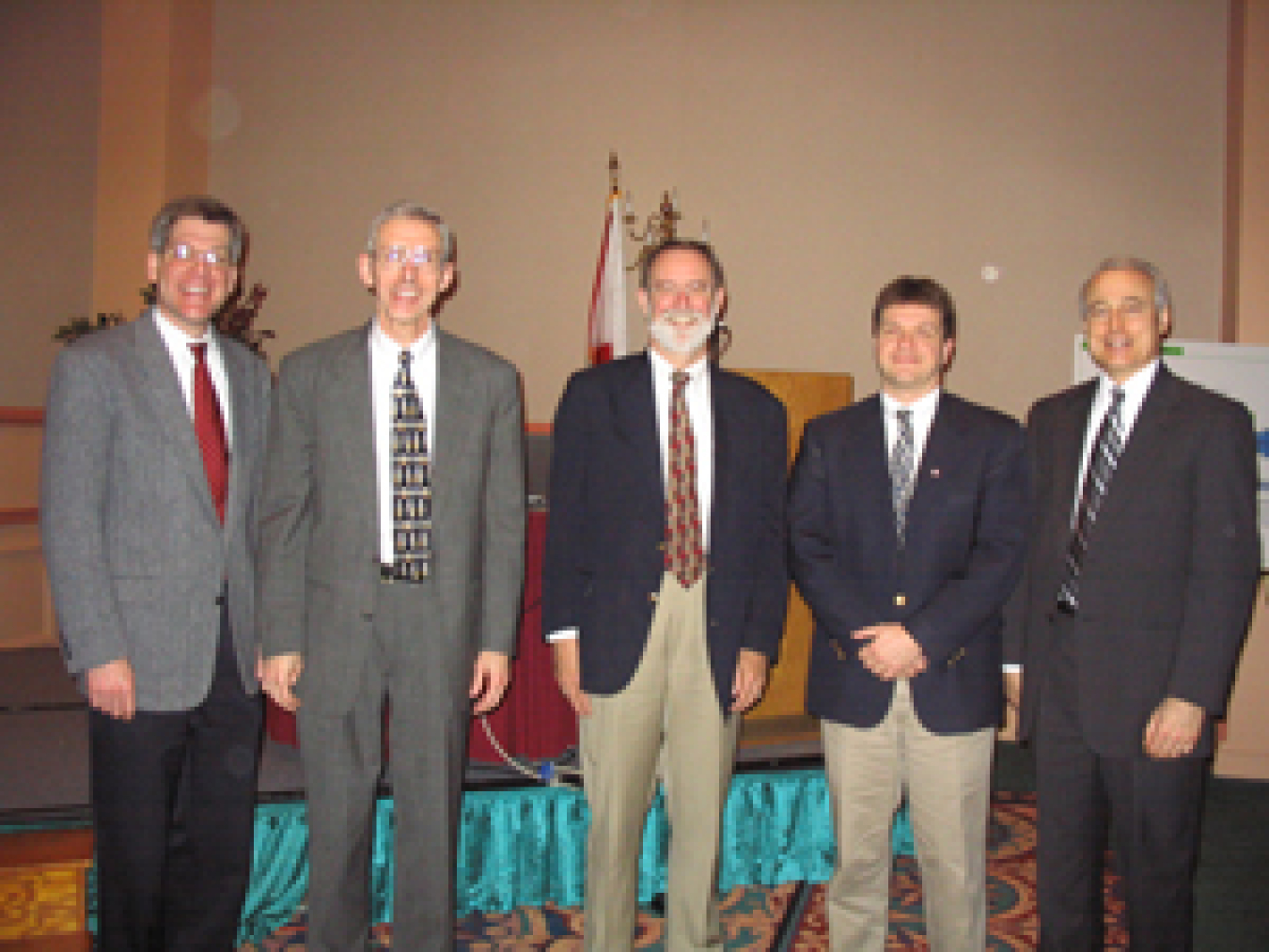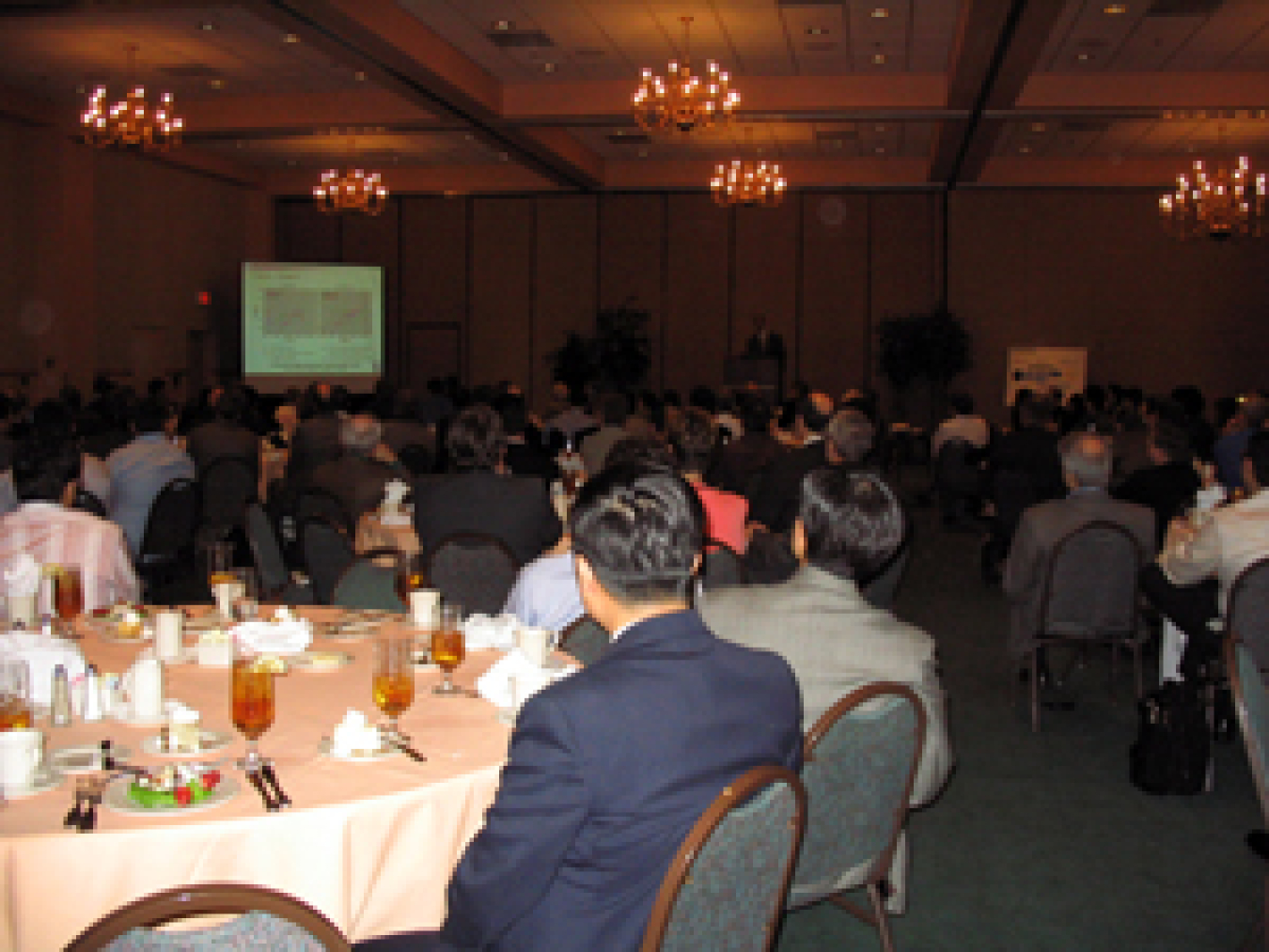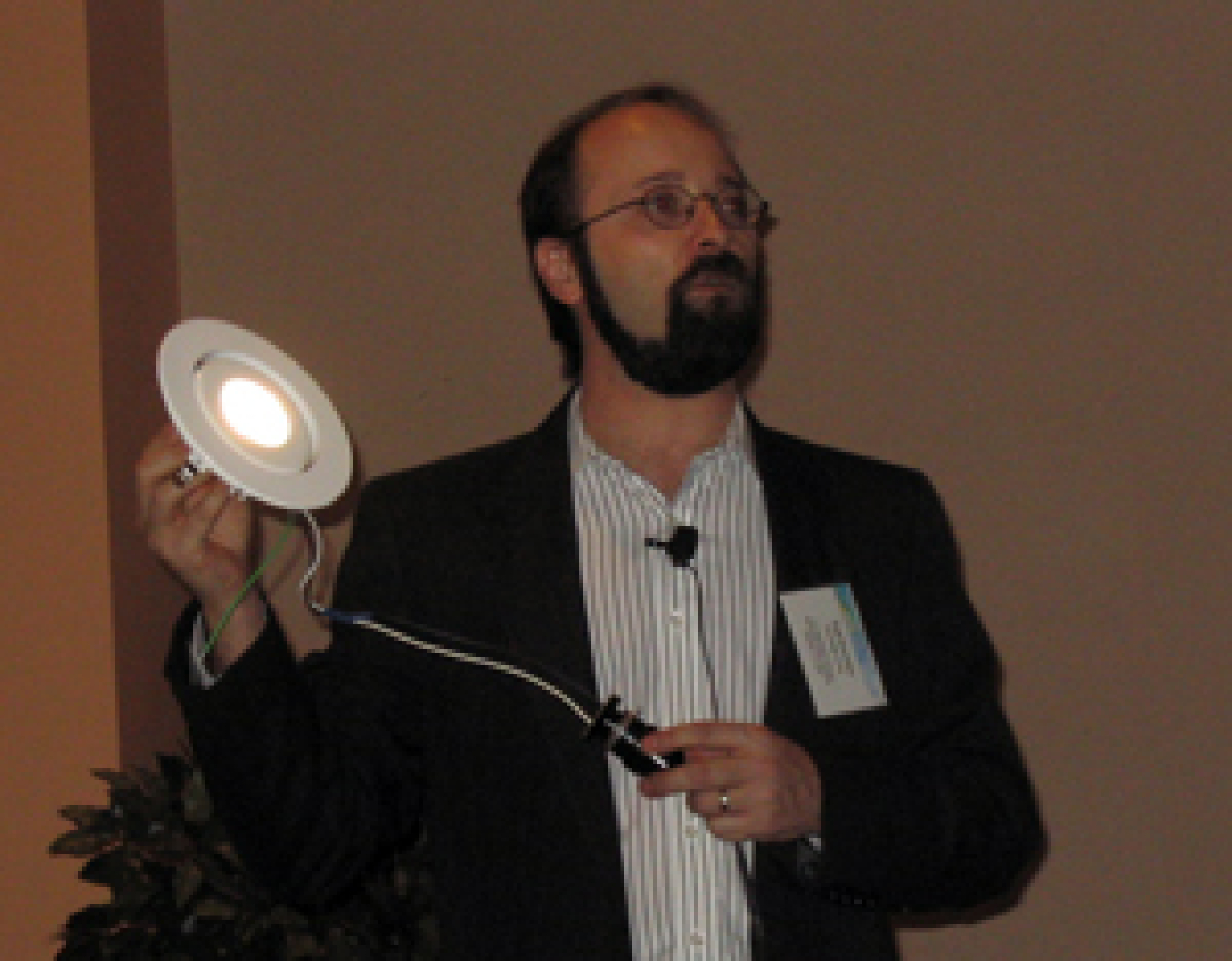Solid-state lighting (SSL) technology leaders from industry, research institutions, universities, and national laboratories gathered in Orlando, Florida from February 1-3, 2006 to attend a workshop focused on advancing SSL technologies from the laboratory to the marketplace. The workshop was hosted by the U.S. Department of Energy (DOE) Office of Energy Efficiency and Renewable Energy (Building Technologies Office) and the Office of Science (Basic Energy Sciences Program). The 2006 workshop provided a forum for sharing updates on basic research underlying SSL technology, SSL core technology research, product development, commercialization support, and the ultimate goal of bringing energy-efficient, cost-competitive products to the market.

The BES Poster Session/Reception provided an opportunity to exchange information and forge partnerships.
Guided by a government-industry partnership, the mission of DOE's SSL program is to create a new, U.S.-led market for high-efficiency, general illumination products through the advancement of semiconductor technologies, to save energy, reduce costs, and enhance the quality of the lighted environment. The 2006 SSL workshop represented the third annual meeting of the Department's program to accelerate advances in SSL technology, and included for the first time a Basic Energy Sciences (BES) Contractors' Meeting. This format enabled BES and SSL researchers to exchange research highlights and results, identify needs, and foster new ideas and collaborations.
Collaboration Strengthens Future for SSL
DOE SSL Program Manager James Brodrick kicked off the workshop, welcoming more than 180 participants to Orlando. Tim Fitzsimmons from BES emphasized the opportunity and challenge for participants: to increase the amount of collaboration between BES and SSL researchers. The keynote presentation by Stephen Forrest of the University of Michigan focused on strategies for achieving high efficiency white light emission at high brightness for the next generation of SSL sources. His presentation set the stage for a series of BES reports highlighting project progress and results. In addition, Paul Alivisatos of Lawrence Berkley National Laboratory discussed how DOE Nanoscience Centers are poised to assist the SSL community in tackling a wide range of important issues. In the evening, a BES Poster Session/Reception provided additional opportunity for discussion and information exchange. Visit the Information Resources section of this site to download the BES project abstracts, the workshop presentations, and related materials.
Targeting Efficiency, Performance, and Cost Goals
In the Day 2 keynote address, Alan Allan from Intel Corporation shared an overview of the International Technology Roadmap for Semiconductors (ITRS), highlighting trends, lessons learned, and the parallels between the semiconductor industry roadmap and the DOE Solid-State Lighting Roadmap.
James Brodrick provided an update of the DOE SSL program, achievements, and key directives of the Energy Policy Act of 2005 related to SSL. He also noted the increase in patents filed in 2005, demonstrating the value of DOE SSL projects to private companies and notable progress toward commercialization. C. Edward Christy from the National Energy Technology Laboratory reviewed the program organization and procurement updates, highlighting the planned schedule for upcoming solicitations and awards in 2006.

Pictured, left to right: Tim Fitzsimmons, DOE; Dale Work, NGLIA; Alan Allan, ITRS; C. Edward Christy, NETL; James Brodrick, DOE.

SSL workshop participants tune in to Mark Huey's presentation on SSL R&D patterns and investments worldwide.
Dale Work from Philips Lighting presented an update on DOE's SSL Partnership with the Next Generation Lighting Industry Alliance, designed to enhance the manufacturing and commercialization focus of the DOE SSL portfolio. In 2005, the Alliance provided input on a number of DOE commercialization support activities (see Day 3 highlights). Tim Fitzsimmons from BES gave an overview of key developments in BES research areas, including the role nanotechnology will play in SSL R&D. Mark Huey of Strategic Perspectives gave attendees insights on the SSL R&D patterns worldwide, noting that investment levels in the U.S. need higher prioritization to address competitiveness concerns; parts of Asia are known to be investing more heavily in SSL research.
Day 2 of the workshop also included brief presentations on current DOE-funded SSL projects in both OLED and LED lighting. These presentations provided attendees with a snapshot of DOE's current SSL project portfolio and provided a useful reference point for discussions and/or potential partnerships. The 2006 Project Portfolio provides more detail on each of the current DOE SSL projects.
Implementation of Initial Commercialization Support Strategies

Ted Ferreira of City Design Group provided a lighting designer's perspective on SSL technology and the marriage of product and need.
On Day 3, Marc Ledbetter of Pacific Northwest National Laboratory (PNNL) provided an overview of DOE's commercialization support strategy, highlighting several activities initiated in 2005. Kelly Gordon of PNNL announced a new SSL category for the 2006 Lighting for Tomorrow Design Competition, intended to recognize innovation, lighting quality, and energy efficiency for specific SSL lighting applications. Visit http://www.lightingfortomorrow.com/ for details.
Jeff McCullough, also of PNNL, presented an update on DOE's progress in developing ENERGY STAR specifications for SSL products, including the planned scope and schedule for the initial criteria. Makarand "Chips" Chipalkatti of Osram Sylvania then addressed activities undertaken by the National Electrical Manufacturers Association (NEMA) SSL section to establish a clearinghouse of reliable, well-accepted information on SSL and provide a focus for technical activities, including addressing infrastructure issues surrounding SSL deployment. The day closed with comments from Ted Ferreira of City Design Group, who provided a lighting designer's perspective on SSL. Stressing his belief that the commercial market is the best path for SSL, he emphasized that commercial buyers seek innovative solutions to lighting problems, and "if it's unattractive, it has missed the mark."

